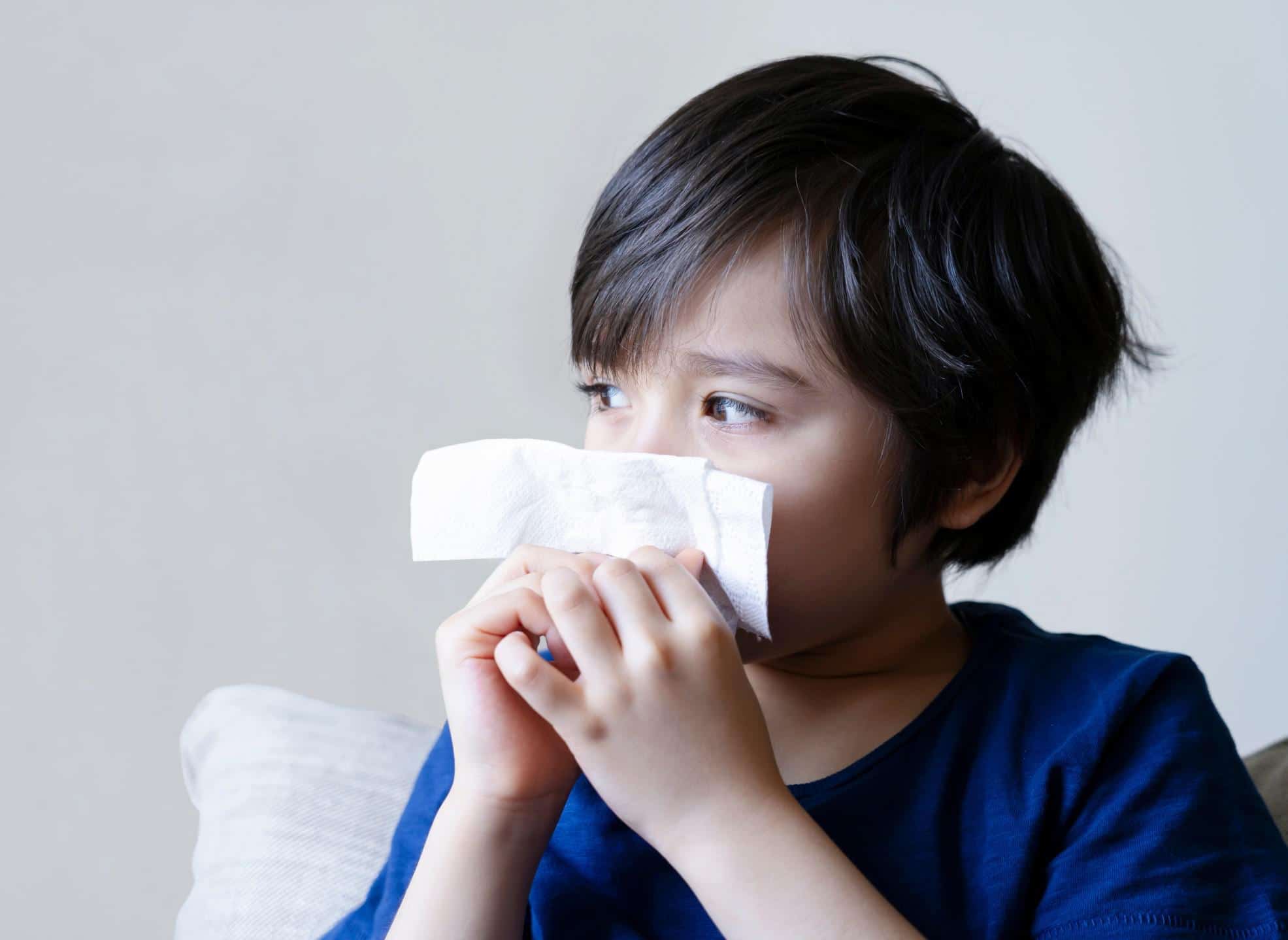Why RSV cases are surging this summer—and what to watch out for

It's not even RSV season, and yet here we are.
Table of Contents
It used to be rare that a case of respiratory syncytial virus (RSV) would pop up in the summer months. The common virus, which can be severe in children under 2, typically appears in September, peaks from December through March, winds down in April, disappears over the summer and only returns when the temperatures drop.
But this past June—well outside of RSV season—the CDC released an advisory notice that RSV cases were spiking across the South. Now, doctors and health experts are warning of larger outbreaks across the country.
With both RSV and the Delta variant on the rise, experts are worried about a surge of pediatric cases of both viruses taxing hospital systems.
In fact, COVID might be to blame for the recent uptick in RSV cases among children. Thanks to lockdowns and school closures during the winter months of 2020 to 2021, RSV wasn’t circulating as much as usual—meaning that kids who usually would have had more general exposure to RSV in their daily lives and built up some natural resistance might now be underexposed, leaving them more vulnerable to severe RSV infection.
While RSV can present as a mild upper respiratory cold, it can be especially severe for children under 2, those with chronic health conditions or weakened immune systems and older adults. Serious cases are marked by a lower respiratory illness, such as bronchiolitis or pneumonia.
The silver lining? Because the virus is so common, most kids who were older than age 2 before winter 2020 will likely have already been exposed to RSV, making their risk of more serious infection now much lower.
Here’s what to look out for and what to do if your child tests positive for RSV.
What are the symptoms of RSV?
RSV has a long incubation period—symptoms may not appear for up to three to five days after the initial infection, which is how it’s so easily passed around daycares and schools. Symptoms may often start out as mild, with just a clear runny nose and reduced appetite for a couple of days, and then progress to cough and wheezing.
Common symptoms
- Clear, runny nose
- Decreased appetite
- Coughing
- Wheezing
- Sneezing
According to the CDC, RSV doesn’t always present with a fever, though it does in some cases. In very young babies, the only symptoms may be decreased activity, irritability and some difficulty breathing.
Severe symptoms
If RSV progresses, the second stage may be marked by more serious symptoms.
- High fever
- Fast breathing rate
- Difficulty breathing
- Persistent cough
- Decreased activity
- Pauses in breathing (apnea)
Be sure to call your child’s pediatrician and head to the nearest hospital if your child is having trouble breathing or experiencing severe symptoms.
How does RSV differ from the common cold?
It can be hard to tell RSV from the common upper respiratory cold—both can leave kids feeling stuffy, tired, lethargic and not hungry.
The telltale signs of RSV are usually the clear runny nose that sets in initially, followed by a congested-sounding cough and wheezing a few days later.
Your child’s doctor can confirm RSV by using a nasal or throat swab test.
How long is RSV contagious?
Kids with RSV who are otherwise healthy tend to be contagious for just 3 to 8 days. But young infants or other people with compromised immune systems can spread the virus for up to four weeks—even if they’re no longer showing symptoms.
How is RSV treated?
Because it’s a virus and not a bacterial infection, RSV is primarily treated through symptom management. Most cases tend to clear up within a week or two, but the following can be helpful as your child recovers:
- Increased fluids: Be sure to offer plenty of water and fluids to avoid dehydration.
- Extra rest: Encourage your little one to get lots of rest and sleep.
- Managing fever: Talk to your doctor about using appropriate fever-reducing medications that are safe for your child.
- Use a humidifier at night: Because colds often get worse around bedtime, try using a humidifier in your child’s room while they’re sleeping.
How is RSV prevented?
According to the CDC, RSV can live on hard surfaces such as toys and doorknobs for many hours. Prevention looks similar to other general virus prevention:
- Frequent hand washing
- Wiping down and sanitizing surfaces and shared toys
- Not sharing bottles, pacifiers or toothbrushes
- Reminding kids to cover their coughs and sneezes—and then washing their hands again
While there is currently no vaccine to protect against RSV for the general public, several are under development. There is, however, a monthly injection given during peak RSV season, Synagis (palivizumab), that can be used to prevent severe RSV in those who are at highest risk, such as premature infants and kids with certain lung or heart conditions. Talk to your child’s pediatrician if you’re concerned about your child’s risk of severe RSV infection.
Sources:
American Academy of Pediatrics. Updated guidance for palivizumab prophylaxis among infants and young children at increased risk of hospitalization for respiratory syncytial virus infection. Pediatrics. 2014;134(2):415-20. doi:10.1542/peds.2014-1665
Centers for Disease Control and Prevention. CDC Health Advisory: Increased Interseasonal Respiratory Syncytial Virus (RSV) Activity in Parts of the Southern United States. June 10, 2021.
Centers for Disease Control and Prevention. Respiratory Syncytial Virus Infection (RSV). Updated Dec. 18, 2020.





































